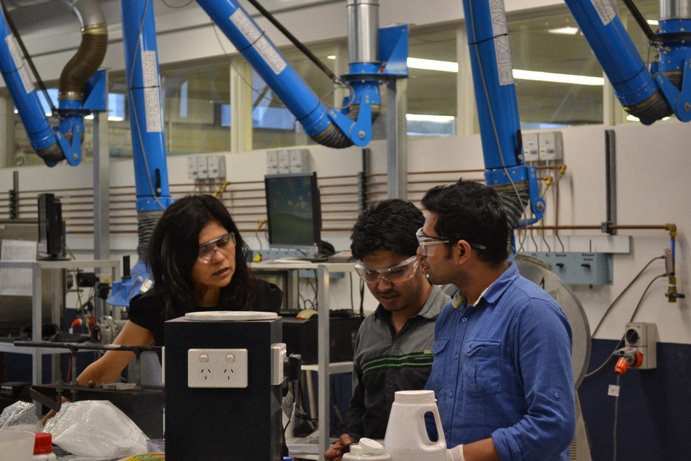Angeli Mehta talks to Veena Sahajwalla of the Centre for Sustainable Materials Research and Technology about how small recycling factories could do social as well as environmental good
Last year, Veena Sahajwalla’s vision of a microfactory that can transform e-waste into its valuable components became a reality. Now, Sahajwalla, director of the Centre for Sustainable Materials Research and Technology (SMaRT) at the University of New South Wales in Australia, is out to prove that it can be run as a commercial operation.
“Whether it’s electronics or packaging materials, what we haven’t thought about is an equally sophisticated way of dealing with the end of life. There is no question: we have to be re-designing with recycling in mind, but the reality is that some products – for example circuit boards – are just so complex ... we can’t necessarily unmake them.”
The microfactory consists of a series of small machines and devices: these could be robots handling broken glass from mobile phones; a small furnace for separating metal components; or a device for reforming plastics into high-quality filaments for 3D printing. And it will need to be agile, depending on the type of product it is receiving.
One of the key differences to traditional recycling is the fact that there isn’t just one type of material in electronics. Isolating them may not be as important as transforming them into valuable new materials – what Sahajwalla describes as “the fourth R”, alongside reduce, reuse, recycle.
Companies can look at the products and see how we do it. So we’re not just handing over the baby, but saying ‘look the baby can walk'
There’s a lot of clever chemistry at work to create new materials from e-waste. One example is silicon carbide, whose properties make it ideal for water filtration. It can be made, in a carefully controlled reaction, from the glass and plastics of a computer monitor.
As Sahajwalla points out, it’s not a new application, but the specialised material could be produced in small quantities and used locally.
Glass is another example. In conventional glass recycling waste glass has to be separated into different types, and the melting process is extremely sensitive to any contamination. “We demonstrated that mixed broken glass can be used as primary input in the production of polymeric glass composites, with the mechanical properties, utility, aesthetic appeal and expected market value that are comparable to natural and engineered stone products.”

The microfactory on the university’s campus has been producing plastic filaments for 3D printing extracted from e-waste such as printers and computers. A local spectacle-frame company is a potential first customer if it can show the filaments are robust. Her team is also prototyping a microfactory that will turn waste textiles, glass and even mattresses into flat construction panels that could be used for heat and sound insulation, and has already attracted commercial interest.
Sahajwalla wants to license the technologies, and expects that “the research will leave the university this year.” She adds: “Companies can look at the products and see how we do it. So we’re not just handing over the baby, but saying ‘look the baby can walk’.”
The components of the microfactory could fit on a site as small as 50m2, so could be located wherever waste is accumulating, especially in remote locations. Different microfactories might concentrate on different types of product or material streams, such as computers or textiles.
This can empower people collecting and sorting waste in many disadvantaged communities, so they have more than just a sifting role
She sees an opportunity to grow this micro-industry in different parts of the world, and it could do social good. “People are collecting and sorting waste in many disadvantaged communities globally. This can empower communities, so they have more than just a sifting role – becoming a manufacturer of valuable materials … and [having] an opportunity to be part of the supply chain.”
It’s especially suited to the systems that are already in place in India, where more than 1 million poor people are involved in manual recycling operations.
This article is part of the in-depth Circular economy briefing. See also:
To rise to the climate emergency we have to turn off the tap on waste
From refilling and sharing to recyclable thin film: the cutting edge on circular
Virginie Helias: P&G’s ocean plastic bottles ‘only the beginning’ of war on plastic
Beyond recycling: Putting the brakes on fast fashion
The battle to turn the tide on the e-waste epidemic
Tata’s push to reinforce steel’s circular economy credentials
‘Companies aren’t moving fast enough on the circular economy’
Centre for Sustainable Materials Research and Technology e-waste


